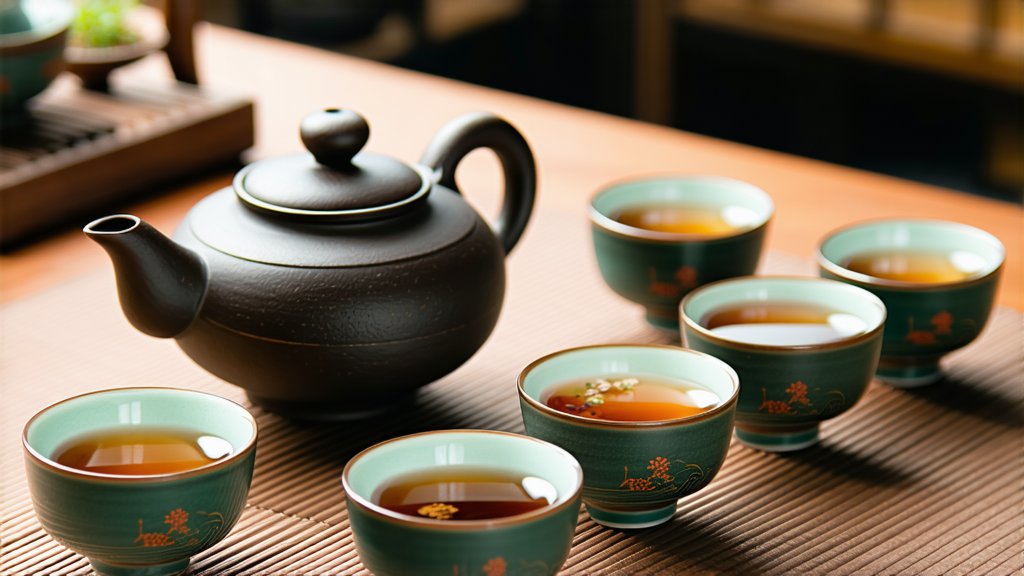
Pu-erh tea, a dark tea variety hailing from the rich cultural landscape of Yunnan province in Southern China, stands as a testament to the intricate relationship between humans and nature. This unique tea, renowned for its deep, earthy flavors and numerous health benefits, has captured the imagination of tea connoisseurs worldwide. In this exploration, we delve into the history, varieties, production process, and the art of appreciating Pu-erh tea.
A Glimpse into History
The origins of Pu-erh tea date back over a thousand years, intertwining with the ancient tea trade routes that connected China to the rest of the world. Initially produced in the town of Pu'er in Yunnan province, this tea was not only a beverage but also served as a form of currency and a means to preserve food during long journeys. Its fermentation process, which sets it apart from other teas, was discovered accidentally when tea leaves were packed tightly and transported over long distances, leading to natural fermentation due to the heat and humidity of the region.
Varieties and Characteristics
Pu-erh tea is broadly categorized into two types: raw (Sheng) and ripe (Shou). Each type undergoes a distinct processing method, resulting in unique flavor profiles and aging potentials.
Raw Pu-erh (Sheng): Made from sun-dried green tea leaves, Sheng Pu-erh undergoes minimal processing post-harvest, allowing for natural fermentation over time. This variety is prized for its fresh, vibrant flavors that evolve with age, transforming from astringent and vegetal notes to smooth, mellow undertones.
Ripe Pu-erh (Shou): Shou Pu-erh undergoes a controlled fermentation process known as "wet piling," where piles of tea leaves are moistened and turned regularly to accelerate microbial activity. This results in a tea with a rich, earthy aroma and a smooth, mellow taste immediately after production, which further deepens with proper storage.
The Art of Production
The production of Pu-erh tea is an art form steeped in tradition. It begins with the careful selection of high-quality tea leaves, typically from ancient tea trees or wild arborescent tea plants found in Yunnan's mountainous regions. These leaves are then plucked, withered, rolled, and sun-dried (for Sheng) or subjected to the wet piling process (for Shou).
Post-fermentation, the leaves are pressed into various shapes—cakes, bricks, or tuochas (nestled cakes)—using traditional stone molds. This not only facilitates aging but also adds a layer of cultural symbolism, with each shape carrying its own historical significance.
Appreciating Pu-erh Tea
To truly appreciate Pu-erh tea, one must engage in the ritualistic practice of Gongfu Cha, a Chinese tea ceremony that emphasizes precision and mindfulness. Here’s a brief guide to savoring this enigmatic brew:
-
Preparation: Begin by warming the teapot and cups with hot water to enhance the tea's aroma. Use a gaiwan (a Yixing clay pot with a lid and spout) for the best experience.
-
Infusion: Place a small amount (around 5-8 grams) of Pu-erh tea into the gaiwan. Rinse briefly with boiling water to awaken the leaves, then discard this initial wash.
-
Steeping: Add hot water (around 95-100°C) and let it steep for about 10-30 seconds for the first infusion. Gradually increase steeping time for subsequent infusions, as Pu-erh tea can be steeped multiple times without losing flavor.
-
Aroma & Taste: Inhale deeply to appreciate the complex aroma before taking a sip. Notice how the flavors evolve with each infusion, revealing layers of sweetness, bitterness, and umami.
-
Observation: Observe the color of the liquor, which ranges from amber to dark brown, and the texture of the leaves, which should unfurl gracefully.
Pu-erh tea is not merely a drink; it's an invitation to slow down, reflect, and connect with centuries-old traditions. As you embark on your Pu-erh journey, remember that patience and curiosity are key. With every sip, you're not just tasting tea—you're partaking in a living history that continues to unfold with each passing moment.